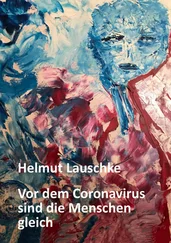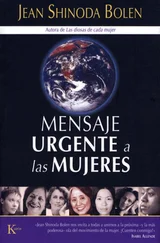Illustration for W. J. Wintle’s 1901 article ‘Life in Our New Century’. (Mary Evans Picture Library)
Fritz Haber in military uniform, 1916. (Archiv der Max-Planck-Gesellschaft, Berlin-Dahlem)
An aerial view of a German gas attack on the Eastern Front in World War I. (From Francis A. March, History of the World War: An Authentic Narrative of the World’s Greatest War (Philadelphia: United Publishers, 1919)/( http: //firstworldwar.com)
British officers watch the devastation caused by the instantaneous motor-bombs. (From Frank Stockton’s The Great War Syndicate of 1889)
The ‘radio-active energy’ of John King’s superweapon makes battleships vanish like a ‘bursting soap-bubble’.(Illustration by Charles Grunwald)
Pax’s ‘Flying Ring’ uses its atomic disintegrating ray to destroy the Atlas Mountains. (Illustration by Walter L. Greene)
Albert Einstein and Fritz Haber in 1914. (S. Tamaru/Archiv der Max-Planck-Gesellschaft, Berlin-Dahlem)
Eugene Wigner in about 1948. (AIP Emilio Segrè Visual Archives)
‘The War of the Future’. (Unnamed artist; Mary Evans Picture Library)
Scientists attending the 1932 Copenhagen conference. (Courtesy Niels Bohr Archive, Copenhagen)
Cover of the script for the 1932 Copenhagen performance of Faust . (Courtesy Niels Bohr Archive, Copenhagen)
Caricature of H. G. Wells from 1913. (Illustration by 220 ‘Tom Titt’ (J. J. Rosciszewski); Mary Evans Picture Library)
Cover illustration for Isaac R. Nathanson’s ‘The World Aflame’. (Illustration by Leo Morey)
Albert Einstein and Leo Szilard re-enacting the signing of their letter to President Roosevelt. (Time Life Pictures/Getty Images)
Fourth-anniversary reunion of CP-1 scientists, 2 December 1946. (Corbis)
A V-2 rocket being prepared for launch at Cuxhaven, Germany, 1945. (Science Museum/Science and Society Picture Library)
Amazing Stories in October 1939 tries to predict what a 293 future atomic power plant will look like. (Mary Evans Picture Library)
Science fiction seemed to have predicted many aspects of the cold-war world. ( Science Fiction Quarterly )
Norris E. Bradbury next to the atomic bomb that was exploded in the Trinity test, July 1945. (Corbis)
The Trinity atomic test. (Courtesy US National Archives and 312 Records Administration, photo no. 434-N-65(7539))
A mother and her son in Nagasaki on 10 August 1945, the day after the atomic bomb was dropped. (Photograph by Yosuke Yamahata; Courtesy US National Archives and Records Administration, photo no. 434-OR-75(1))
Aerial view of the smoking ruins of New York City after an atomic attack, from the 1952 film Invasion USA .(Columbia Tristar/Getty Images)
The 1951 Avon edition of Philip Wylie’s The Smuggled Atom Bomb .
John von Neumann receives the Medal of Freedom at the White House from President Eisenhower, on 16 February 1956. (Bettmann/Corbis)
Cover by David E. Pattee for Astounding Science Fiction , November 1950. (Mary Evans Picture Library)
Portrait of Leo Szilard in his sixties. (Photographed by Tita Binz/Corbis)
Journalists and military personnel witness the Charlie nuclear test, 22 April 1952. (Courtesy US National Archives and Records Administration, photo no. 434-RF-10(5))
The 1958 thriller Red Alert by Peter Bryant (aka Peter George).
Edward Teller next to a model of the Tsar Bomba , the biggest ever hydrogen bomb. (ITAR-TASS/Valery Bushukhin)
Wernher von Braun, pictured in about 1947. (Keystone/Getty Images)
Peter Sellers taking the title role in Stanley Kubrick’s Dr Strangelove (1964). (Hulton Archive/Getty Images)
Company Sergeant Major Albert Edward Smith, around 1915.
Bernard Smith saluting the flag in about 1931.
This bibliography includes the major works of fiction, non-fiction and the cinema that are referenced in the notes, as well as other books, articles, stories and films of interest. However, it does not list references to sources such as newspaper articles, archives and websites which are included in the notes.
Fiction
Anderson, Poul, ‘Tomorrow’s Children’ (1947). In Miller and Greenberg, eds., Beyond Armageddon .
Asimov, Isaac, ed., Before the Golden Age: A Science Fiction Anthology of the 1930s (New York: Doubleday, 1974).
—— and Greenberg, Martin Harry, eds., The Golden Years of Science Fiction , 2nd series (New York: Bonanza, 1983).
Austin, FrederickBritten, “‘Planes!’” (1913). In Clarke, ed., The Tale of the Next Great War .
Avallone, Michael, Beneath the Planet of the Apes (New York: Bantam, 1970).
Ballard, J. G., ‘The Terminal Beach’ (1964). In Gunn, ed., The Road to Science Fiction .
Barr, Densil Neve, The Man with Only One Head (London: Digit Books, 1962; 1st edn 1955).
Barr, Robert, ‘The Doom of London’, The Idler , 2 (Aug. 1892–Jan. 1893), 397–409.
Bell, Neil, The Lord of Life (London: Collins, 1933).
Benet, Stephen Vincent, ‘By the Waters of Babylon’ (1937). In Miller and Greenberg, eds., Beyond Armageddon .
Benford, Gregory and Greenberg, Martin Harry, eds., Nuclear War (New York: Ace Books, 1988) .
Bester, Alfred, ‘Adam and No Eve’ (1941). In Asimov and Greenberg, eds., The Golden Years of Science Fiction , 2nd series.
—— ‘Disappearing Act’ (1953). In Malzberg and Pronzini, eds., The End of Summer .
Bone, J. F., ‘Triggerman’ (1958). In Benford and Greenberg, eds., Nuclear War .
Boulle, Pierre, ‘ E = mc 2’ (1966), in Time Out of Mind (New York: Signet Books, 1969; 1st edn 1966).
Brackett, Leigh, The Long Tomorrow (New York: Ace, 1955).
Bradbury, Ray, ‘The Million-Year Picnic’ (1946). In Gunn, ed., The Road to Science Fiction .
—— ‘There Will Come Soft Rains’ (1950). In Miller and Greenberg, eds., Beyond Armageddon .
Brecht, Bertolt, Leben des Galilei (Berlin: Suhrkamp, 1972; 1st edn 1955).
Brown, Frederic, ‘The Weapon’ (1951). In Benford and Greenberg, eds., Nuclear War .
Bryant, Peter, Red Alert (New York: Ace Books, 1958).
Buck, Pearl S., Command the Morning (London: Methuen, 1959).
Bulmer, Kenneth, The Doomsday Men (New York: Curtis Books, 1968; 1st edn 1965).
Bulwer-Lytton, Edward, The Coming Race (London: George Routledge, 1888; 1st edn 1871).
Burdick, Eugene and Wheeler, Harvey, Fail-Safe (London: Hutchinson, 1963; 1st edn 1962).
Campbell, John W. Jr, ‘Atomic Power’ (1934). In Conklin, ed., The Golden Age of Science Fiction .
Čapek, Karel, Krakatit , trans. L. Hyde (London: Geoffrey Bles, 1925; 1st edn 1924).
—— The Absolute at Large (Westport, Conn.: Hyperion, 1988; 1st edn 1922).
Cartmill, Cleve, ‘Deadline’ (1944). In Conklin, ed., The Golden Age of Science Fiction .
Casewit, Curtis W., The Peacemakers (New York: Macfadden Books, 1968; 1st edn 1960).
Chesney, Gen. Sir George T., The Battle of Dorking (1871). In Clarke, ed., The Tale of the Next Great War .
Christie, Agatha, Destination Unknown (Glasgow: Fontana, 1975; 1st edn 1954).
Christopher, John, The Death of Grass (London: Penguin, 1958; 1st edn 1956).
Clarke, I. F., ed., The Tale of the Next Great War, 1871–1914: Fictions of Future Warfare and of Battles Still-to-Come (Liverpool University Press, 1995).
—— ed., British Future Fiction , Vols 1–8 (London: Pickering & Chatto, 2001).
Читать дальше












